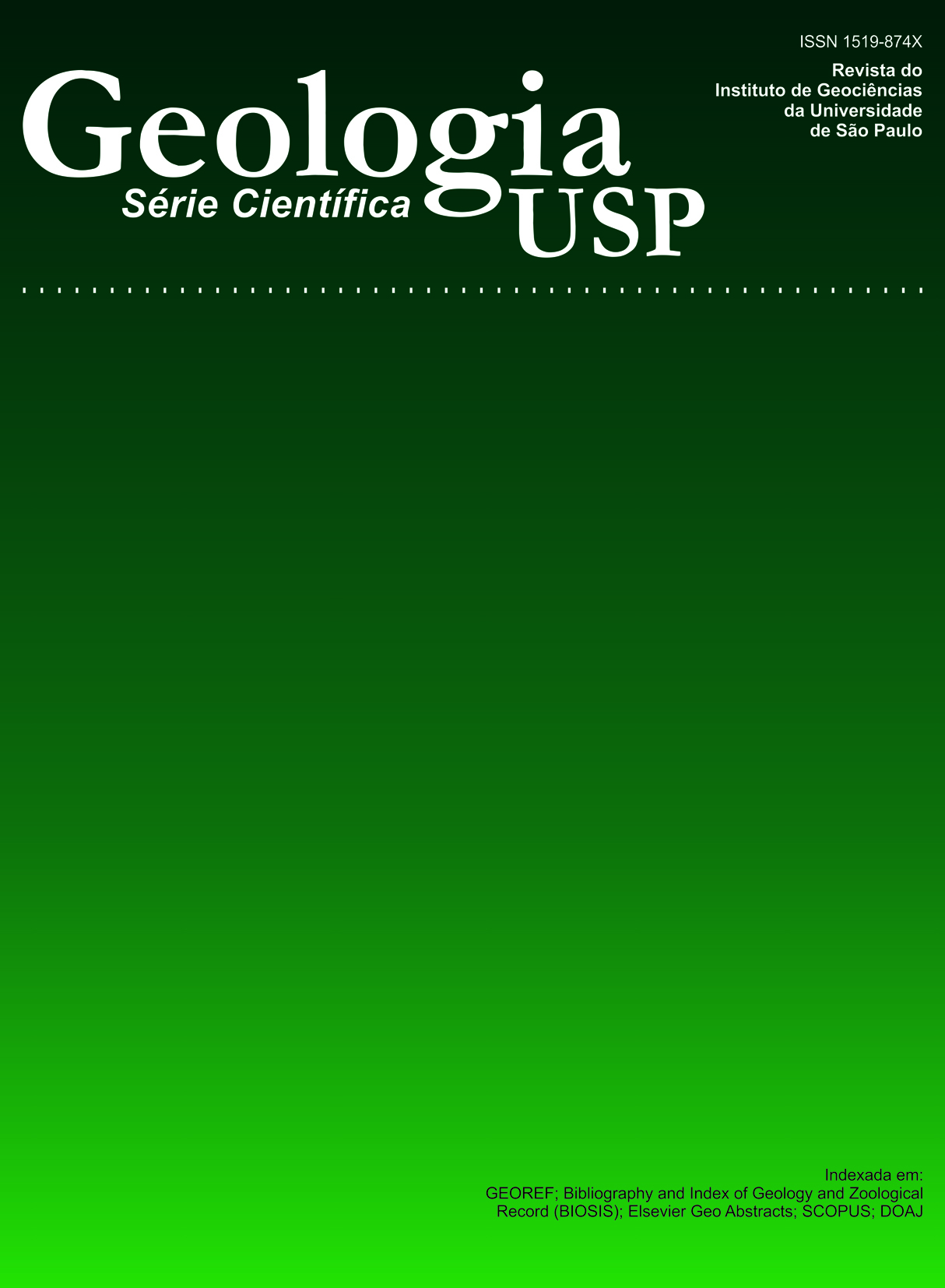Gamma-spectrometric Surveys in Differentiated Granites. II: the Joaquim Murtinho Granite in the Cunhaporanga Granitic Complex, Paraná, SE Brazil
DOI:
https://doi.org/10.5327/Z1519-874X2009000100004Keywords:
Cunhaporanga Granitic Complex, Joaquim Murtinho Granite, Alaskitic granites, Gamma-spectrometric terrestrial survey, U-Th minerals, granites, Behaviour of K-Th-U, weatheringAbstract
Detailed mapping at the NW corner of the large Neoproterozoic Cunhaporanga Granitic Complex (CGC), Paraná state, SE Brazil, redefined the Joaquim Murtinho Granite (JMG), a late intrusion in CGC with an exposed area of about 10 km², made up mainly by evolved"alaskites" (alkali-feldspar leucogranites). This unit is in tectonic contact with the Neoproterozoic-Eocambrian volcano-sedimentary Castro Group, to the W, and is intrusive into other less evolved granitic units of the CGC to the E. Petrographically, JMG shows mainly mesoperthite and quartz, with subordinate amounts of altered micas and some accessory phases, mainly zircon. The equi to inequigranular granites are usually deformed with cataclastic textures, are often brecciated, and may have miarolitic structures. Formation of late albite, sericite, carbonate and hematite was caused by deuteric and hydrothermal alteration. A gamma-ray spectrometric survey at 231 stations which measured total counts (TC), Ueq K%, eU ppm and eTh ppm was used to construct several direct and derived maps. Compared to neighboring units the JMG has significant anomalies, especially in the TC, %K, eTh and eU maps, although the differences are less obvious in some derived maps. These evolved granites are enriched in these three elements. Geochemical behavior of K, Th and U is used to analyse the results observed in maps. Enhanced weathering under a subtropical climate with moderate to high average temperatures and heavy rainfall affects mainly feldspars and biotite, and may also destabilize most U and Th-bearing accessory phases. Th is most likely retained in restite minerals in soils, being relatively immobile, while part of U may migrate as uranyl ion in oxidizing media. K is especially affected by feldspar alteration to K-free clays (mainly kaolinite), and may be completely leached. Gamma-ray spectrometric methods are valid tools to study facies in granitic rocks, especially in those that are enriched in K, Th and U.Downloads
Download data is not yet available.
Downloads
Published
2009-01-01
Issue
Section
Articles
License
Authors who publish in this journal shall comply with the following terms:
- Authors keep their copyright and grant to Geologia USP: Série Científica the right of first publication, with the paper under the Creative Commons BY-NC-SA license (summary of the license: https://creativecommons.org/licenses/by-nc-sa/4.0 | full text of the license: https://creativecommons.org/licenses/by-nc-sa/4.0/legalcode) that allows the non-commercial sharing of the paper and granting the proper copyrights of the first publication in this journal.
- Authors are authorized to take additional contracts separately, for non-exclusive distribution of the version of the paper published in this journal (publish in institutional repository or as a book chapter), granting the proper copyrights of first publication in this journal.
- Authors are allowed and encouraged to publish and distribute their paper online (in institutional repositories or their personal page) at any point before or during the editorial process, since this can generate productive changes as well as increase the impact and citation of the published paper (See The effect of Open Access and downloads on citation impact).
How to Cite
Ferreira, F. J. F., Fruchting, A., Guimarães, G. B., Alves, L. S., Martin, V. M. O., & Ulbrich, H. H. G. J. (2009). Gamma-spectrometric Surveys in Differentiated Granites. II: the Joaquim Murtinho Granite in the Cunhaporanga Granitic Complex, Paraná, SE Brazil . Geologia USP. Série Científica, 9(1), 55-72. https://doi.org/10.5327/Z1519-874X2009000100004





